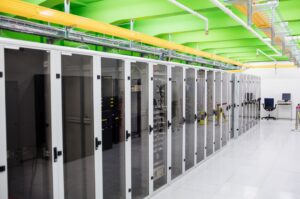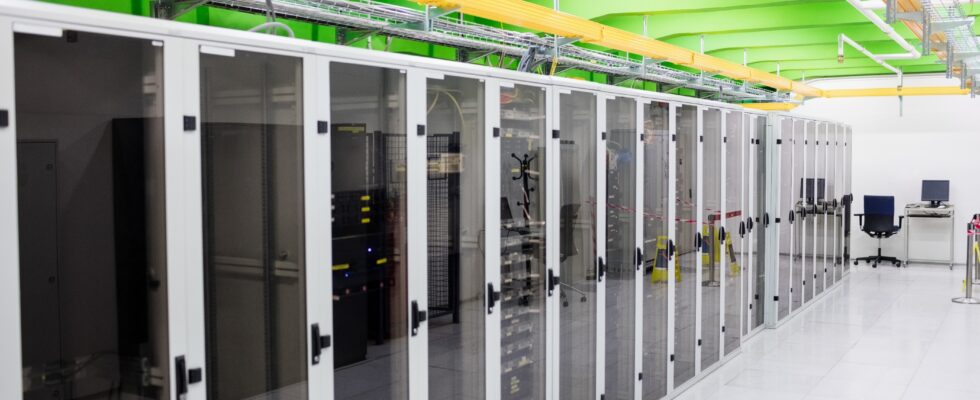 Data centres are the backbone of Singapore’s digital economy – powering e-commerce, the Internet of Things (IoT), Artificial Intelligence (AI) services, and online collaboration tools. Despite their ubiquity, data centres have come under scrutiny for their vast and often unchecked consumption of natural resources.
Data centres are the backbone of Singapore’s digital economy – powering e-commerce, the Internet of Things (IoT), Artificial Intelligence (AI) services, and online collaboration tools. Despite their ubiquity, data centres have come under scrutiny for their vast and often unchecked consumption of natural resources.
According to a report by Bain & Company, Microsoft and Temasek, data centres in Singapore will account for 12% of the country’s electricity consumption by 2030 as data demands rise rapidly, putting enormous strain on the nation’s electricity grid. In addition to being power-hungry, data centres are also thirsty. The US Department of Energy estimates that some data centres can consume 3-5 million gallons of water each day to keep machines from overheating. This is the equivalent of the amount of water consumed by a city of 30,000 to 50,000 people per day.
In the race to achieve net zero carbon emissions by 2050, companies and countries are accelerating their environmental and social corporate governance (ESG) and taking steps to self-monitor their energy consumption. Singapore has emerged as a frontrunner in this regard – with the Infocomm Media Development Authority (IMDA) releasing a landmark standard to optimise energy efficiency in data centres in tropical climate environments.
Singapore ranks at the top of Asia Pacific and ties with Silicon Valley for second place as the world’s most desirable data centre location. With the new standard in effect, Singapore is poised to become a leader in driving the clean energy transition in the APAC region. The IMDA anticipates that data centres in Singapore could benefit from 2 to 5 per cent energy savings with every 1°C increase in the operating temperature. There are already reports that data centre operators could achieve roughly S$250,000 in energy cost savings a year from adopting the new standard.
Addressing the value chain challenge
Policies are necessary, but often, they are only as good as the technologies supporting them. The industry needs technology with real-time planning and reliable insights on their Scope 3 emissions. Scope 3 represents a key battleground in the fight against carbon emissions. It encompasses indirect emissions across a company’s entire value chain across the globe, including the emissions of partner companies, making it challenging to keep in check.
This is where graph technology can help firms incorporate sustainability into their organisational design, boosting data transparency and business reputation. Since visualisation capabilities are already built into graph databases, companies can easily see environmental problems highlighted in the data by region, site, or equipment, and can quickly identify and fix problems.
With graph technology, Singaporean and APAC companies can analyse massive amounts of data, interconnect the relationships between data points and ensure accurate reporting while reducing costs and lowering their carbon footprint. As a more lightweight technology requiring far less data centre power and cooling, graphs can easily drive improved functionality for large-scale businesses and accelerate the nation’s digitalisation ambitions.
Digital twins for optimised processes
Many leading organisations are building digital twins of their value chain, backed by a modern native graph database that can scale easily. Digital twins provide a comprehensive digital view of the business, which can set the foundation to meet lower emission targets. Because graph databases are so flexible, once a set of processes is linked together, it is easy to add additional output data on top of this, like emissions and environmental compliance.
Graph-based digital twins connect emissions data in a way that would be difficult, or even impossible, to do in non-graph systems. With a graph-based digital twin, companies have a fully contextualised view of every entity in the value chain and, as a result, their contribution to their organisation’s total carbon emissions. The best part is that digital twins grow alongside organisations. Companies can begin with a simple use case and then embed more data and use cases as the team’s graph expertise matures and GHG estimation methodologies become more sophisticated.
Good for business and the planet
Climate reporting has enabled many organisations to improve their performance by driving business growth and opportunities. Increasingly, investors are closely examining the impact of climate change on companies as they establish targeted strategies and targets to decarbonise their business models and reduce emissions. By putting climate action at the heart of their business strategy and deploying the right technology at the right juncture, governments and organisations will discover that the transition is good for both the planet and business.
By Nik Vora, Vice President – APAC Neo4j
This article was first published by Singapore Business
